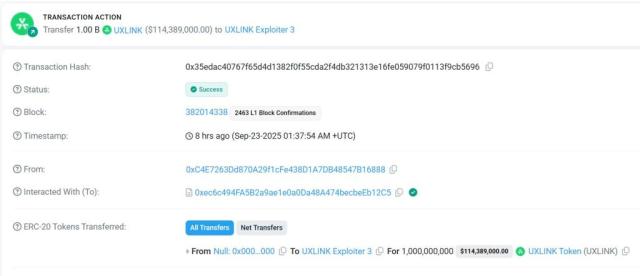0G (Zero Gravity) is building a modular blockchain that combines data availability, storage, and compute into a high-performance platform designed for decentralized AI.
Its token model introduces one-time payments for permanent storage, staking for security, and incentives for nodes and AI compute providers — but long-term sustainability depends on real adoption.
Backed by Conflux veterans and $35M in early funding, 0G promises extreme throughput (50GB/s) and Ethereum-anchored security, yet faces tough competition from Celestia, EigenDA, and Polygon Avail.

THE AMBITION OF TECHNOLOGY: MODULAR ARCHITECTURE AND THE LIMITS OF DATA AVAILABILITY
In the wave of modular blockchain, 0G (Zero Gravity) has chosen the boldest path: not only solving data availability bottlenecks but also building a full platform for decentralized AI. From day one it positioned itself as “the operating system for decentralized AI,” aiming to rewire storage, compute, data availability, and execution so blockchains can handle internet-scale AI and data applications.
The architecture is divided into four modules: 0G Chain, 0G Storage, 0G Data Availability, 0G Compute. 0G Chain, the consensus and execution layer, is based on a modified Conflux consensus. It parallelizes block production and reduces disk I/O, reaching throughput far beyond traditional L1s. The team claims each consensus partition can deliver 50GB/s data availability throughput — 50,000 times higher than Ethereum’s Danksharding design.
0G Storage targets large-scale data. It offers log-style storage for unstructured files and key-value storage for structured data. With erasure coding and Proof of Random Access (PoRA), miners must prove they hold actual data chunks to earn rewards, improving reliability and persistence.
The Data Availability layer separates publishing and storage: blocks only record data commitments while full data sits in storage. Validators run Data Availability Sampling (DAS) to check data integrity with minimal bandwidth, and commitments are also anchored to Ethereum using KZG proofs. This hybrid design brings Ethereum-level trust while breaking single-chain bottlenecks.
Finally, 0G Compute creates a decentralized compute market. AI providers register inference services, users pay in tokens, and results are verified with zero-knowledge proofs or trusted execution environments before settlement. In practice, models can be stored, called, and even trained on-chain.
Compared to Celestia’s lightweight DA or EigenDA’s Ethereum-restaking model, 0G’s ambition is broader: integrate high-performance storage, DA, and AI compute into one unified system. The goal is not only faster DA, but to rebuild blockchain as internet-scale infrastructure.
TOKENS AND INCENTIVES: HOW TO FUEL NODES AND THE ECOSYSTEM
A complex architecture needs strong economics to keep nodes running. The native token $0G has a total supply of 1 billion, with about 21% circulating at mainnet launch. Distribution: 28% ecosystem fund, 15% AI alignment node rewards, 13% community rewards, 22% team and advisors, 22% investors.
Use cases cover the entire network. $0G is gas for transactions, contracts, storage, and AI inference. It is also staked for consensus and security, and used as rewards for storage miners (PoRA), DA validators, and compute providers.
The storage economy is distinctive. Users pay once for permanent storage. A part goes to immediate miner rewards, another to a “donation pool” releasing ~4% annually, and early miners get royalties when others replicate their data. This encourages replication and redundancy.
But sustainability is not guaranteed. If new data payments slow, old data rewards shrink and miners may exit. DA and compute rewards must also balance with costs. In short, $0G’s economy relies heavily on real demand growth to remain viable.
The model is both innovative and risky: early generous allocations to bootstrap, then long-term value tied to AI and Web3 demand. If on-chain AI takes off, token value grows with usage; if adoption lags, the system’s fragility will surface.
TEAM AND COMPETITION: FROM CONFLUX TO ZERO GRAVITY
Unlike many new L1s, 0G builds on the Conflux legacy. Co-founders Ming Wu and Fan Long were key members of Conflux, bringing experience in consensus and scaling. They imported Conflux’s DAG insights into 0G’s parallel consensus.
CEO Michael Heinrich, a Stanford alumnus, adds startup and AI-market vision. Another co-founder, Thomas Yao, also Stanford, was an investor who brought the team together. The mix of engineers and entrepreneurs gave 0G both technical depth and fundraising ability.
In 2023, 0G raised $35M in Pre-Seed, led by Hack VC with Animoca, Delphi Digital, Alliance, OKX Ventures, and 40+ others. The round was oversubscribed 20x, reflecting strong market interest in “AI + modular blockchain.”
Still, the competitive landscape is tough. Celestia has first-mover advantage with rollup adoption. Polygon Avail has Polygon’s ecosystem. EigenDA inherits Ethereum security. NEAR DA serves its own chain. 0G stands out with integrated design and extreme performance, but faces high complexity and limited time to build traction. Without killer apps in the next 1–2 years, its lead may narrow.
REAL VALUE: THE TEST OF ECOSYSTEM AND LONG-TERM POTENTIAL
Ultimately, value comes from adoption. 0G puts AI front and center: store large models, call inference directly in contracts, and ensure transparent audit trails. Partnerships with Modulus Labs and Oraichain already target this use case.
Beyond AI, 0G eyes gaming and metaverse. Games need massive state updates and asset storage, which 0G’s throughput and cheap storage can handle. High-frequency trading and DeFi may also benefit from parallel consensus and rapid settlement. DePIN use cases, like IoT or wireless networks, can log terabytes of sensor data at low cost.
At launch, only prototypes exist: AI demos, data markets, some storage apps. About a dozen projects plan to deploy, but nothing mainstream yet. The community is enthusiastic but cautious, noting Celestia’s slow growth as a warning. On-chain AI remains mostly conceptual.
On valuation, 0G already reached a multibillion-dollar FDV. Clearly, story premium plays a role. If apps lag, volatility will rise. But if 0G enables one breakout AI or gaming project, upside could be huge.
The real test is not how impressive technical numbers look, but whether 0G can build a self-sustaining ecosystem in the next few years. Ambition must meet adoption, and capital must be validated by real usage. Zero Gravity’s gamble will only pay off if on-chain AI truly takes flight.
〈The Zero-Gravity Gamble: 0G Wants to Be the Operating System for Decentralized AI〉這篇文章最早發佈於《CoinRank》。







